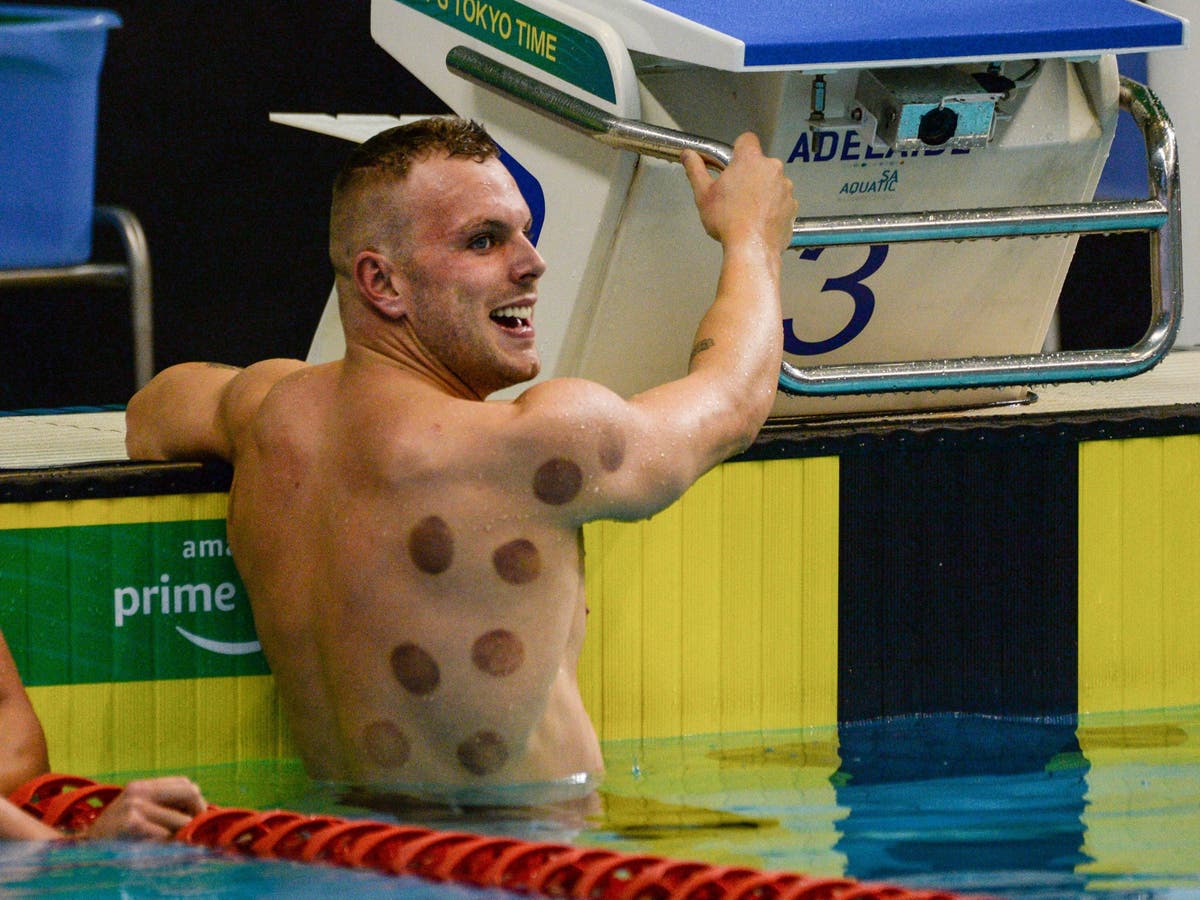
As the swimming competitions get underway at the Tokyo Olympic games, many athletes from across the world have debuted bodies covered in strange dark circles as they dive into the pool.
It is not the first time the painful-looking splotches, which were seen on the backs of both Japanese swimmer Akira Namba and Team Australia’s Kyle Chalmers, have been spotted at the Olympics.
In 2016, the dots could be seen all over gold medalist Michael Phelps’ back as he raced through the water, while Team US gymnast Alex Naddour had similar spots on his shoulders.
Follow Tokyo 2020 Olympics live: Latest updates and medals
The marks come from a process known as cupping, an ancient therapy that has roots in Middle Eastern and Asian cultures. The practice claims to have myriad benefits, such as increasing blood circulation, relieving muscle tension and promoting cell repair, however scientific evidence of its benefits is slim.
Here’s everything you need to know about the treatment.
What is cupping?
Cupping is a type of alternative therapy that involves creating suction on the skin using glass, ceramic, bamboo or plastic cups. A negative pressure is created inside the cup by attaching a suction device to the cup once it’s placed on the skin, drawing out the air.
By pulling on the skin in this way, the process is thought to decompress the muscles and connective tissue and promote blood flow to the suctioned area, subsequently speeding up the body’s own healing processes.
There is also another lesser-used form of cupping, known as “wet cupping”. In this process, a milder suction is used on the cup, which is left in place for a slightly longer period. After removing the cup, the therapist uses a small scalp to make tiny cuts across the skin. A second suction is then performed to draw out small quantities of blood.
One study, published in the Journal of Acupuncture and Meridian Studies in 2018, found that wet cupping had reduced the amount of toxic metal in the blood.
To find out what others are saying and join the conversation scroll down for the comments section or click here for our most commented on articles
Where does cupping originate from?
The origins of cupping are unclear. Wet cupping has been used in traditional Iranian medicine throughout history, with the belief that it may improve the appearance of scar tissue, and both wet and dry cupping has been performed in China since the 1950s.
However, its roots appear to be much older. The ancient Greek physician Hippocrates, who practised around 400 BC, used cupping to treat internal disease; while Muslims believe that Prophet Muhammad strongly recommended wet cupping.
Why does cupping leave a mark?
The suction cup is only placed on the skin for a few minutes, but it is long enough to cause capillaries just below the surface to rupture, creating dark purple bruises under the skin.
How did cupping become popular?
Cupping was spotlighted at the 2016 Olympics when the dark red bruises left after the treatment were seen on gold medallist Michael Phelps’ back, shoulders and legs.
Speaking to Sky Sports at the time, he said he mainly gets the treatment on his shoulder because that’s where he usually hurts the most.
“That’s where I usually hurt the most [and] I’ve done it before meets, pretty much every meet I go to.
“I just asked for a little ‘cupping’ yesterday because I was sore and the trainer hit me pretty hard with one and left a couple of bruises,” he said.
However, Gwenyth Paltrow wants us to know that the actor turned lifestyle guru has been using the ancient treatment long before athletes at the Olympics.
“Suffice it to say, we at goop have been into cupping since – well, before Michael Phelps won his first gold medal,” she writes on the Goop website.
In 2004, she sported similar red blotches on her back while attending a film premiere in New York City.
Explaining her belief in the healing power of the treatment on Goop, the actress said: “Eastern medicine has a different approach than Western medicine – it’s more holistic. The root of the problem is addressed, as opposed to a symptom being attended to with prescription medication.”
What does science say?
There is no conclusive scientific evidence that proves cupping has any health benefits.
The US National Center for Complementary and Integrative Health concludes that “not enough high-quality research” has been carried out to allow conclusions to be reached about whether cupping is helpful.
One separate study, published in the Journal of Traditional and Complementary Medicine in 2019, suggested that damage to the skin and capillary vessels from cupping may stimulate a process in the body that inhibits pain.
However, the study’s authors noted that “large randomised clinical trials, systematic reviews and meta-analyses in future” are needed to reveal its full effects.
While the NHS does not list cupping as a treatment on its website, the treatment is legal in the UK and can be carried out by practitioners certified by the General Regulatory Council for Complementary Therapies.





